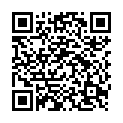|
|
|
| Module code: E614 |
|
4V+2P (6 hours per week) |
|
7 |
| Semester: 6 |
| Mandatory course: yes |
Language of instruction:
German |
Assessment:
Written exam after 6th semester
[updated 12.03.2010]
|
E614 Electrical Engineering, Bachelor, ASPO 01.10.2005
, semester 6, mandatory course
|
90 class hours (= 67.5 clock hours) over a 15-week period.
The total student study time is 210 hours (equivalent to 7 ECTS credits).
There are therefore 142.5 hours available for class preparation and follow-up work and exam preparation.
|
Recommended prerequisites (modules):
E104 Fundamentals of Electrical Engineering I
E203 Fundamentals of Electrical Engineering II
E303 Electronics I
E402 Electronics II
[updated 12.03.2010]
|
Recommended as prerequisite for:
|
Module coordinator:
Prof. Dr. Albrecht Kunz |
Lecturer:
Prof. Dr. Albrecht Kunz
[updated 12.03.2010]
|
Learning outcomes:
This lecture course aims to provide students with a broad understanding of the field of telecommunications electronics by teaching the fundamental principles of the subject and providing examples from current developments in the field.
After completing the course, students will be able to teach themselves those advanced areas of the subject that they will encounter in their subsequent careers.
The lectures are run in tandem with accompanying problem solving classes. By tackling practically relevant problems, students learn to use commercially available simulation software to simulate the complex circuits and systems found in telecommunications electronics.
The problem-solving exercises require the students to display the results of the simulations graphically and to interpret and assess the results – skills that enable them to develop optimized solutions for specific technical problems. Finally, students are expected to present their proposed solutions to the lab group thus training the social and communicative skills needed in their later professional lives.
[updated 12.03.2010]
|
Module content:
1.Introduction
2.Two-port characterization
3.Impedance transformations
4.Design of HF amplifiers
5.Oscillators and generators
6.Detectors and mixers
7.Surface wave filters
8.Transmission and reception of optical communications signals
[updated 12.03.2010]
|
Teaching methods/Media:
Overhead transparencies, PC, video projector
[updated 12.03.2010]
|
Recommended or required reading:
Misra, Devendra K.: Radio-Frequency and Microwave Communication Circuits, Analysis and Design, John Wiley & Sons
Mescheder, Ulrich: Mikrosystemtechnik, Hanser-Verlag, Konzepte und Anwendungen, Teubner
Lee, Thomas H.: The Design of CMOS Radio-Frequency Integrated Circuits, Cambridge University Press
Hayward, W. H.: Introduction to Radio Frequency Design, American Radio Relay League
Bowick, Christopher: Rf Circuit Design, Newnes, Reprint edition
Rea, Randall W.: Oscillator Design and Computer Simulation, Noble Publishing Corporation
Rutledge, David B.: The Electronics of Radio, Cambridge University Press
Mandl, Mathew: Principles of Electronic Communications, Prentice-Hall
Best, Roland: Theorie und Anwendungen des Phase-locked Loops, AT-Verlag
Pozar, David M.: Microwave and RF Design of Wireless Systems, John Wiley & Sons
Stephens, Donald R.: Phase-Locked Loops for Wireless Communications, Kluwer Academic Publishers
Brückner, V.: Optische Nachrichtentechnik: Grundlagen und Anwendungen, Vieweg Verlag
Hunsperger, R. G.: Integrated Optics – Theory and Technology, Springer Verlag
[updated 12.03.2010]
|


